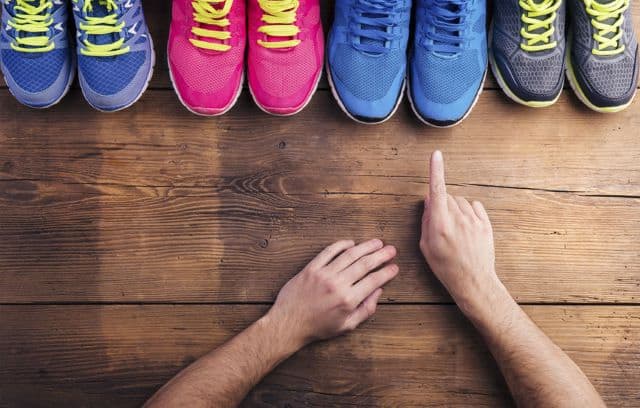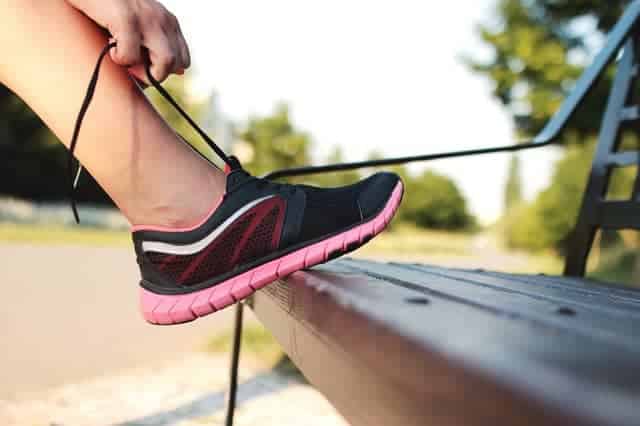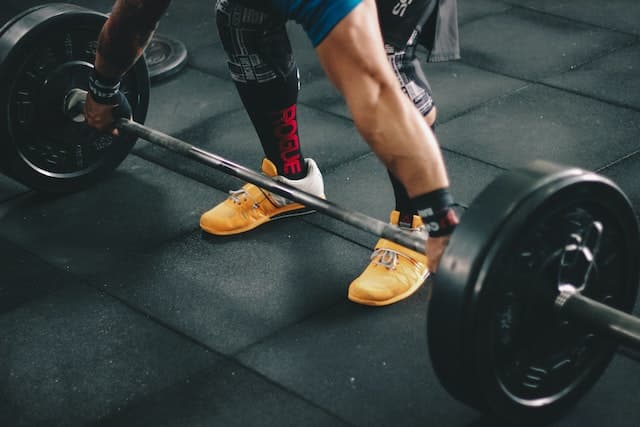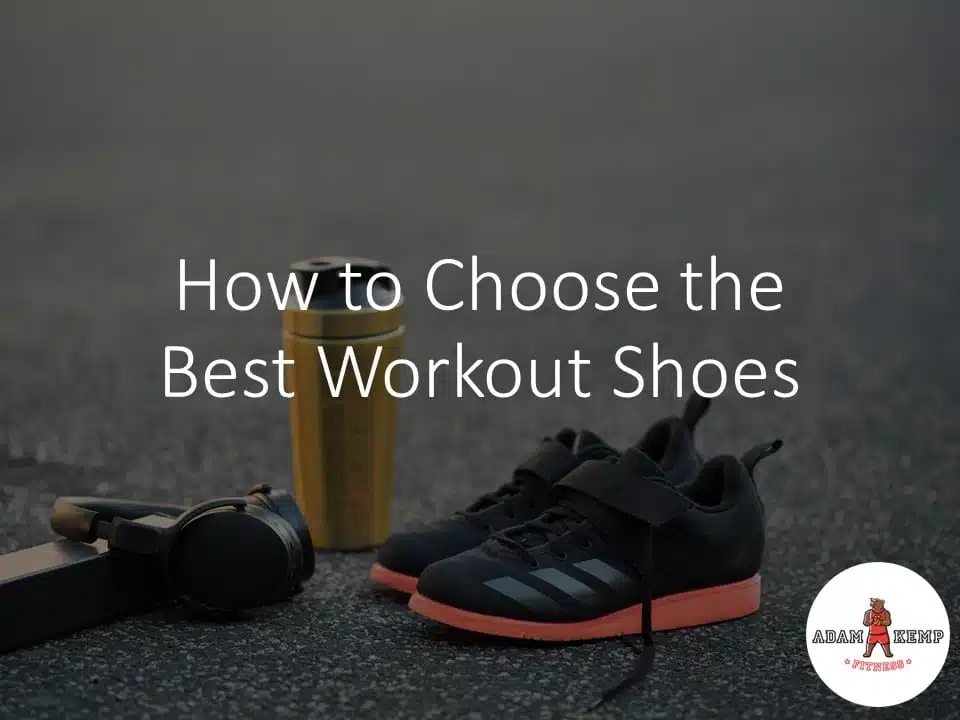How to Choose the Best Workout Shoes for Your Fitness Needs
In an era where health and fitness have taken center stage, choosing the best workout shoes for your exercise type is often overlooked but more crucial than ever.
Over the past two decades, athletic footwear has evolved remarkably, catering to the diverse needs of fitness enthusiasts across the globe.
The perfect workout shoe not only enhances your performance but also prevent injuries and ensure your feet stay comfortable during your favorite activities.
While popular brands like Nike may be synonymous with athletic shoes, it’s important to remember that the most well-known option isn’t always the best fit for you.
The key to finding your ideal workout companion lies in understanding your individual needs and the specific requirements of your chosen exercise.
As someone who spent years searching for the perfect workout shoes, I can attest to the significant difference they can make in both performance and overall well-being.
In this article, we’ll explore the various types of workout shoes available, and I’ll share my top recommendations for each exercise type.
Strap on your laces and get ready to find your perfect match!
Consequences of Choosing the Wrong Workout Shoes
When it comes to selecting workout shoes, making the wrong choice can have far-reaching consequences that go beyond just subpar performance.
Choosing shoes that aren’t tailored to your specific exercise can expose you to a range of potential injuries, compromising your workout goals and overall health.
Some of the most common injuries and issues that can arise from wearing ill-suited workout shoes include:
- Sprains and Dislocations: These painful injuries can occur when your shoes fail to provide adequate support or stability during high-impact activities, causing you to twist or dislocate a joint.
- Tendinitis and Achilles Inflammation: Unsuitable footwear can place excessive strain on your tendons, leading to inflammation and even chronic pain.
- Fractures: Insufficient shoe cushioning and support can make you more susceptible to stress fractures, particularly in high-impact exercises.
- Muscle Overload and Strains: Shoes that don’t cater to the demands of your workout can hinder your body’s ability to distribute force evenly, causing undue strain on your muscles.
- Athlete’s Foot: A poorly ventilated shoe can create a breeding ground for fungi, leading to uncomfortable and itchy skin conditions like athlete’s foot.
- Chafing and Blisters: Ill-fitting shoes can cause friction and rubbing, resulting in painful blisters and chafing that can sideline you from your fitness journey. Products such as ChafeZone can help prevent chafing, but the most important step is to choose the best workout shoes for your exercise type.
By understanding the potential hazards of wearing the wrong workout shoes, you can make a more informed decision when choosing footwear that will enhance your performance and safeguard your well-being.
Types of Workout Shoes
There are many different types of workout shoes to choose from, depending on the exercise you will be doing, and choosing the right workout shoes can significantly impact your feet and entire body.
For starters, the proper workout shoes will provide enough cushion between the ground and the foot.
Since some activities require a large amount of cushion, and some very little, you must choose the proper style.
Along with that, the right workout shoes will reduce the impact of landing on all of your muscles, joints, and tendons.
You’d be surprised how much choosing the right pair of workout shoes can affect issues such as jumpers knee.
Lastly, choosing the right pair of workout shoes will provide the right grip on different floor surfaces, depending on the sport or activity.
A few of the most common types of workout shoes are:
- Running Shoes: Running shoes provide cushioning, stability, and support for running on different surfaces. They can be further divided into categories like neutral, stability, sprinting, and motion control shoes.
- Cross-Training Shoes: Cross-training shoes are designed for various activities, including gym workouts, group classes, and short-distance running. They offer a combination of cushioning, support, and flexibility.
- Weightlifting Shoes: Weightlifting shoes have a raised heel and a solid, non-compressible sole to provide stability and support during weightlifting exercises, such as squats and deadlifts.
- Minimalist/Barefoot Shoes: Minimalist shoes have thin soles and minimal cushioning to provide a natural, barefoot-like experience during workouts, promoting better foot strength and proprioception.
- Cycling Shoes: Cycling shoes have a stiff sole and a cleat system to attach to the pedals, providing better power transfer and efficiency during cycling workouts.
- CrossFit Shoes: Specifically designed for the demands of CrossFit workouts, CrossFit shoes provide a balance of cushioning, stability, and durability. They offer a low-to-the-ground profile for better stability during weightlifting and a more flexible forefoot for agility and plyometric exercises. CrossFit shoes also have reinforced areas for rope climbs and lateral support for quick side-to-side movements.
- Walking Shoes: Designed for everyday walking or fitness walking, these shoes offer cushioning, support, and flexibility tailored for a walking gait. They often have a more rounded heel and a flexible forefoot to promote a smooth heel-to-toe transition. Walking shoes provide good arch support, shock absorption, and a comfortable fit for various foot shapes and walking styles.
Best Shoes for Different Types of Workouts
Here are my favorite shoe options for a variety of different workout types:
Best Cross-Training Shoes

Cross-training shoes are a versatile option for fitness enthusiasts who engage in various workouts.
No longer just “cross trainers” or “aerobics shoes,” this athletic footwear category is specifically designed to offer protection and support during a wide range of fitness activities.
From weightlifting and diverse fitness classes to racquet sports and general use at the gym, cross-training shoes have got you covered.
These multi-talented shoes boast cushioning and varying stability features to protect your feet and ankles.
They are the jack-of-all-trades, well-suited for an array of activities.
However, if you participate in a specific sport, such as running or basketball, more than twice a week, you should invest in a sport-specific shoe as well.
Cross-training shoes offer several key features, including:
- Rigid Metatarsal Support: Side-to-side support ensures your feet remain stable during high-intensity activities.
- Minimal Heel Cushioning: Unlike running shoes, cross-training shoes do not have excessive heel cushioning, making them more adaptable to different workouts.
- Lightweight Design: Their lightweight construction allows for seamless transitions between exercises.
These versatile shoes can withstand the pressure from running and provide ample cushioning for your entire foot, ensuring comfort throughout your chosen workout.
In my opinion, the Nike MetCon stands out as the best cross-training shoes on the market, offering a perfect blend of versatility and performance.
Last update on 2025-07-07 / This article includes affiliate links/Images via Amazon Product Advertising API. I may earn commissions on purchases made through these links.
Best Running Shoes

The secret to finding the best running shoes lies in understanding the unique structure of your feet.
By identifying your foot type, whether flat-footed or high-arched, you can select the perfect pair to support and cushion your feet during your runs.
Running is a high-impact activity, so finding the best running shoes for your foot type is crucial.
Here are some tips to help you find your ideal running shoe:
- Determine Your Foot Type: Conduct a wet test on brown paper or analyze the wear pattern on the inner sole of a frequently used pair of shoes to ascertain whether you have flat feet or high arches.
- Choose Running Shoes Based on Your Arch Type:
- Flat Feet: Opt for running shoes with motion control features to counteract the tendency of your feet to roll inwards.
- High Arches: Select shoes with a soft midsole and cushioning on the sides to accommodate the natural outward roll of your feet.
- Prioritize Shock Absorption and Heel Control: High-quality running shoes should provide excellent shock absorption and heel control to prevent heel pain, stress fractures, and shin splints. As running generates a shock wave that travels through your skeleton, many biomechanics experts and doctors recommend cushioning in your shoes to mitigate the impact.
One of my top choices for running shoes is the Nike Pegasus, an affordable and reliable option for both men and women that I’ve used and loved for years.
Last update on 2025-07-07 / This article includes affiliate links/Images via Amazon Product Advertising API. I may earn commissions on purchases made through these links.
Another excellent alternative is the Adidas Torsion System Running Shoes, which offer great support and comfort for various foot types.
If you’re primarily a sprinter, consider specialty sprinting shoes with gold track spikes for optimal performance.
Best Weightlifting Shoes

Although many people lift weights in their walking or running shoes, weightlifting shoes are distinctly different from running shoes, catering to the specific demands of strength training exercises.
When lifting weights, it’s essential to have a stable grip on the ground, while running shoes focus on cushioning and impact absorption.
Additionally, running shoes are cushioned to absorb the impact incurred with every step, but reliable bodybuilding shoes should have a raised heel allowing you to squat deeper and be in a more upright sitting position.
Based on the research, here is what sets weightlifting shoes apart:
- Firmness: Excessive cushioning in running shoes can reduce force production during lower body lifts, such as squats and deadlifts. Choose a shoe with a firmer sole to optimize power in these movements.
- Raised Heel: Weightlifting shoes typically have a raised heel, which allows for deeper squats and a more upright sitting position, thanks to an increased ankle range of motion.
- Reduced Trunk Lean: Wearing weightlifting shoes can help decrease overall trunk lean, potentially reducing shear stress in the lower back area. Additionally, they may contribute to greater muscle activation in the knee extensors.
- Personal Preferences: While some individuals find flat-soled shoes suitable for weightlifting, it’s essential to determine what works best for you. Barefoot-style running shoes can also serve as an alternative.
In my experience, the Nike MetCon remains a top choice for weightlifting, offering stability and support.
However, if you’re looking for a more affordable option, consider the classic Chuck Taylor Converse sneakers.
These shoes have long been a popular choice among weightlifters for their cost-effectiveness and performance.
Last update on 2025-07-07 / This article includes affiliate links/Images via Amazon Product Advertising API. I may earn commissions on purchases made through these links.
Best Cycling Shoes
Cycling shoes may come with a heftier price tag, but for those committed to their cycling routine, investing in a pair can significantly enhance your performance and comfort.
Here are the key features to consider when selecting the ideal cycling shoes:
- Secure Fit: High-quality cycling shoes should hold your feet in place, preventing slippage off the pedals and ensuring a comfortable ride.
- Stiffness: Opt for shoes that are stiff enough to provide support and prevent cramping, yet flexible enough for a comfortable pedaling experience.
- Clipless Pedal Compatibility: Many cycling shoes are designed to work with clipless pedals, facilitating seamless energy transfer and improved control over pedal strokes.
- Closure System: While both laces and straps are available, straps are generally preferred for their quick closure and secure fit.
- Activity-Specific Cycling Shoes: Depending on your cycling preferences, such as spin bikes, city bikes, or mountain bikes, you may require different types of shoes to optimize your performance.
For those seeking cycling shoes suitable for spin bikes and city bikes, I recommend the Tommaso Cycling Shoes.
These shoes offer a combination of performance-enhancing features and a comfortable fit, making them an excellent choice for avid cyclists.
Last update on 2025-07-07 / This article includes affiliate links/Images via Amazon Product Advertising API. I may earn commissions on purchases made through these links.
Best Minimalist/Barefoot Shoes
Minimalist or barefoot shoes are a unique category of athletic footwear designed to mimic the natural, barefoot experience during workouts.
These shoes feature thin soles and minimal cushioning, allowing for greater foot mobility and encouraging the development of stronger foot muscles.
Here are some key aspects to consider when choosing minimalist or barefoot shoes:
- Lightweight Design: Minimalist shoes prioritize a lightweight construction, giving you the sensation of being barefoot while still offering a layer of protection against the ground.
- Flexibility: These shoes are highly flexible, allowing your feet to move and adapt to various surfaces, thus promoting natural foot movement and improved balance.
- Thin Soles: With thin, low-profile soles, minimalist shoes provide minimal cushioning and support, enabling you to feel the ground beneath your feet for a more tactile experience.
- Enhanced Proprioception: The close-to-ground feel of minimalist shoes can help improve your proprioception, or your body’s awareness of its position in space, potentially leading to better overall stability and coordination.
- Gradual Transition: If you’re new to minimalist or barefoot shoes, transitioning gradually is essential, allowing your feet and lower leg muscles time to adapt to the altered biomechanics.
- Activity Suitability: Minimalist shoes can be suitable for various activities, including running, walking, and some gym workouts. However, they may not be ideal for high-impact sports or activities that require significant stability and support.
When choosing minimalist or barefoot shoes, selecting a pair that matches your specific needs and preferences is crucial, ensuring optimal comfort and performance during your workouts.
Vibram is renowned for their exceptional minimalist/barefoot shoes, offering unique features and benefits:
- Innovative FiveFingers Design: Enhances flexibility, dexterity, and ground feel.
- Superior Grip: High-quality rubber soles ensure outstanding traction on various surfaces.
- Comfort and Fit: Ergonomic design provides a comfortable, glove-like fit.
- Breathability: Lightweight materials keep feet cool and dry during workouts.
- Versatility: Suitable for various activities, including running, walking, hiking, and gym workouts.
Vibram’s commitment to innovation and functionality makes them a top choice for minimalist/barefoot shoes enthusiasts.
Last update on 2025-07-07 / This article includes affiliate links/Images via Amazon Product Advertising API. I may earn commissions on purchases made through these links.
Best CrossFit Shoes
CrossFit shoes are engineered to cater to the unique demands of CrossFit workouts, offering a balance of cushioning, stability, and durability to help you excel in your training.
Here’s what sets CrossFit shoes apart:
- Versatility: Designed to perform well in various exercises, CrossFit shoes can handle weightlifting, running, plyometrics, and other functional movements, making them ideal for the diverse nature of CrossFit workouts.
- Stability: With a low-to-the-ground profile, CrossFit shoes provide enhanced stability during weightlifting, allowing for improved power and control.
- Flexibility: A more flexible forefoot allows for greater agility and responsiveness during dynamic exercises like box jumps and burpees.
- Reinforced Design: CrossFit shoes often include reinforced areas for added durability during rope climbs and other high-wear activities.
- Lateral Support: These shoes are built with extra lateral support to facilitate quick side-to-side movements and help prevent injuries.
- Comfort: CrossFit shoes provide a comfortable fit and adequate cushioning to ensure optimal performance during long and demanding workouts.
The Nike Metcon 9 is the best CrossFit shoe choice among the many options available.
The Nike MetCon 9 combines all the essential features, offering versatility, stability, flexibility, and durability to help you conquer your CrossFit goals.
Last update on 2025-07-07 / This article includes affiliate links/Images via Amazon Product Advertising API. I may earn commissions on purchases made through these links.
Best Walking Shoes
Walking shoes are specifically designed to cater to the needs of casual and fitness walkers, providing cushioning, support, and flexibility tailored for a natural walking gait.
Here’s what makes walking shoes stand out:
- Rounded Heel: Walking shoes feature a more rounded heel, promoting a smoother heel-to-toe transition and reducing stress on the foot and lower body.
- Flexible Forefoot: With a flexible forefoot design, walking shoes ensure ease of movement and adaptability to various surfaces, enhancing your overall walking experience.
- Arch Support: These shoes offer optimal arch support, accommodating different foot shapes and walking styles, while helping to prevent foot fatigue and discomfort.
- Shock Absorption: Walking shoes provide effective shock absorption to minimize the impact of each step, reducing the risk of injury and promoting long-lasting comfort.
- Comfortable Fit: Designed to ensure a comfortable and secure fit, walking shoes cater to various foot shapes and sizes, ensuring a pleasant walking experience.
- Durability: High-quality walking shoes are built to last, featuring durable materials and construction to withstand the wear and tear of regular use.
The Nike Pegasus Trail stands out as the best walking shoe choice among the available options.
The Nike Pegasus Trail combines all the essential features, offering exceptional cushioning, support, flexibility, and durability, making it the perfect companion for both everyday strolls and fitness walks.
Last update on 2025-07-07 / This article includes affiliate links/Images via Amazon Product Advertising API. I may earn commissions on purchases made through these links.
Final Thoughts: How to Choose the Right Workout Shoes
By selecting the best workout shoes tailored to your specific training needs, you can experience significant improvements in comfort and performance.
Whether you’re a long-distance runner or require versatile everyday training shoes, investing in the right pair will help maintain your foot health for years.
Another valuable tip is to consider adding shoe insoles designed for hard surfaces and workouts.
I’ve personally benefited from custom orthotics since fracturing my 5th metatarsal during college.
To use orthotics, simply replace the original insole with a high-quality alternative, like those from Powerstep, to experience a noticeable difference in comfort.
While custom orthotics are optimal, any premium insole can significantly improve your footwear experience.
By following the advice above, you’ll be well-equipped to make an informed decision when selecting your next pair of workout shoes.
The right footwear can truly make a world of difference in your fitness journey!
I hope you found these workout shoe reviews insightful and that they assist you in choosing the ideal workout shoes to meet your needs!
This website does not provide medical advice. This website site does contain affiliate links, and purchases may earn a commission.
Read my Medical Disclaimer, Review Disclaimer, and Publishing Policies for more details. Use of this site indicates acceptance of these terms.









